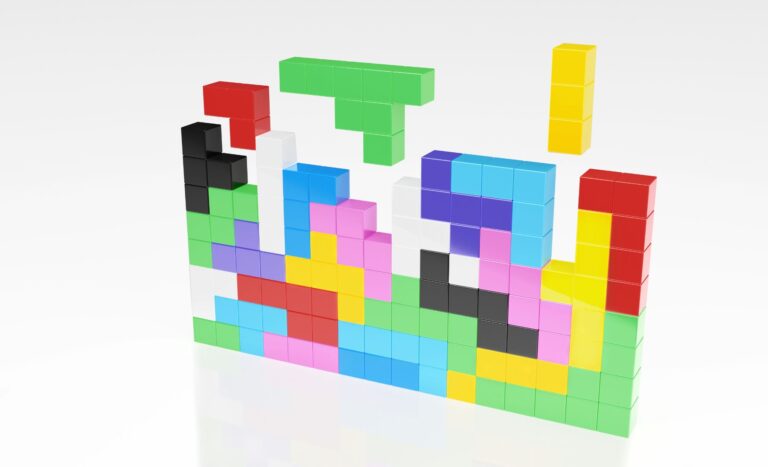For revenue teams everywhere, there’s one constant: they’re expected to drive growth.
Over the past few years, sellers everywhere, and particularly B2B sellers, have faced extraordinary challenges with respect to the global pandemic. During those troubled times, revenue teams were still expected to drive growth. But, a change in how business was conducted required new processes and, often, new selling tools.
What followed was a “grow at any cost” mentality. And, for a great many organizations, it worked.
Until it didn’t.
Now, in the midst of an economic downturn, revenue teams are increasingly tasked with pivoting from growth at any cost to predictable, responsible and profitable growth.
After adding overlapping investments in revenue tech stack tools during the pandemic, revenue teams now must consolidate their tools in order to become more efficient growth machines. This post covers key considerations for consolidating your tech stack for efficient growth.
Assess How Your Current Revenue Tech Stack is Used
It’s important for the Operations team to be in close contact with revenue team members to understand how they interact with the tech stack and what’s happening on the “front line” with prospective customers. Unfortunately, too often this self-assessment of the tech stack is not continual, requiring an periodic audit.
Auditing your current tech stack is the first step to any consolidation of tech tools.
Start with your buyers — how have their buying journeys evolved, and how well are they being served by your revenue team’s practices and processes? Be aware that buying journeys changed dramatically over the past several years. If you’re using the same old processes supported by the same old tech stack, you just might be way off base!
Don’t just interview users of the revenue tech stack. When possible, observe their processes and determine the exact steps they’re taking and how tools are facilitating the buying journey. If direct observation isn’t possible, then conduct after-action reviews/debriefs on a sample size. You’ll not only understand how the tech stack is (or isn’t) supporting your go-to-market (GTM) processes, but you’ll also identify problem areas and training opportunities.
Don’t let this audit go to waste. Use this opportunity to develop a continuing, cross-functional working group that will regularly assess your GTM processes and evaluate not only your Salesforce instance, but all the wrap-around tools of your tech stack.
Differentiate Between Point Solutions & a Revenue Tech Platform
A point solution is a tech tool that addresses a single use case or challenge that exists within your revenue team. In the “grow at all costs” years, point solutions were often added to tech stacks without rigid examination.
An efficient revenue tech stack requires a tech platform that supports your entire revenue team, the complexity of its GTM motions, and the demands of your buyers. A tech platform, like LeanData’s Revenue Orchestration platform, serves as a centralized hub for the revenue team to manage the sales pipeline from creation to close, in addition to providing the metrics and reports for revenue team leaders. Within a unified data model, your revenue platform should deliver holistic views into your prospective customers’ buying journeys, allowing your team to proactively respond to high-value, high-priority opportunities.
When evaluating your current tech stack, identify solutions that primarily perform one task, and particularly ones that don’t integrate well with other tools, especially stables of your stack, like your CRM. Also, be aware of point solutions that are prone to being problematic, like ones that export data from your stack, manipulate it, and then transfer new records back to the CRM. Potential security problems alone might be enough to consider cutting some solutions.
Don’t Throw Out the Baby With the Bath Water
Okay, so you might be thinking, “let’s find point solutions, eliminate them, and get by with fewer tools.” Not so fast!
Efficiency is great, but effectiveness comes first. If your tech stack can’t empower sustainable growth, it doesn’t really matter how efficient it is. Don’t remove a point solution simply because it’s “only” a point solution. There are a great many world-class point solutions available, and if you have a pressing opportunity that needs solving, a world-class solution might be better than “getting by” with an inferior tool.
Often a tech stack assessment will find a point solution that was brought on to solve one challenge but has additional functionality that’s not being utilized. Reach out to your tech stack vendors to understand all the features available. You might discover you can increase the functionality of one tool to such an extent you can eliminate another tool from your tech stack.
Also, as you engage your vendors, determine if a vendor’s strategic vision aligns with that of your organization. A shared vision often results in a solution platform that empowers a revenue team to be more impactful, efficient and value-added (to both customers and the organization). When your team knows the tech stack empowers them to do what they do best, adoption and utilization increase, and efficient growth ensues.
Determine Which Tools to Consolidate
An efficient and data-driven revenue team will power you through any turbulent marketplace. But, getting there requires a reconsideration of your tech stack spend. To eliminate tools and consolidate functions, work through the following questions:
Foundational
- Are sales forecasts currently accurate? (Y/N and why)
- Is the sales pipeline sufficient in all segments? (Y/N and why)
- Is the win rate sufficient? (Y/N and why)
- If you continued with the current tech stack, how could you increase effectiveness and efficiency at every stage of the buying journey/sales cycle?
Targeting
- Are any tech stack tools redundant or duplicative of one another (Y/N)
- Can any tool be removed without impacting a prospective customer’s buying journey? (Y/N)
- Can any tool be removed without adding time-consuming tasks to members of your revenue team? (Y/N)
- Are any tools underutilized by the team? (Y/N)
- Are any tools being utilized in a silo and not cross-functionally across the entire team (Y/N)
Once you measure the effectiveness of your existing tech stack, you can then make an informed decision if it makes sense to consolidate one or more point solutions for a more comprehensive platform.
Plan for Long-Term Profitability
You survived — and perhaps even thrived — through the COVID-19 pandemic. Congratulations. It wasn’t easy for most.
The current economic conditions we’re experiencing are more typical of previous economic cycles, and lessons learned in the past can prove immensely valuable. The organizations that prospered during previous volatility did so based on gains in efficiency. When market conditions stabilized, they had the foundational strength to rocket out of the gates and race to a competitive advantage.
As you seek efficiency gains in your revenue-generating processes, be careful, thoughtful, intentional and purposeful. Growing your company’s profitability is a long-term endeavor.
Consolidating your tech stack is an action that right-sizes your tech stack for the benefit of your organization and its customers, and provides a foundation for your long-term growth and profitability. Strategically partner with your vendors to not only become more efficient, but to unlock productivity gains as well. Doing so delivers meaningful growth that will satisfy all your internal and external stakeholders.













